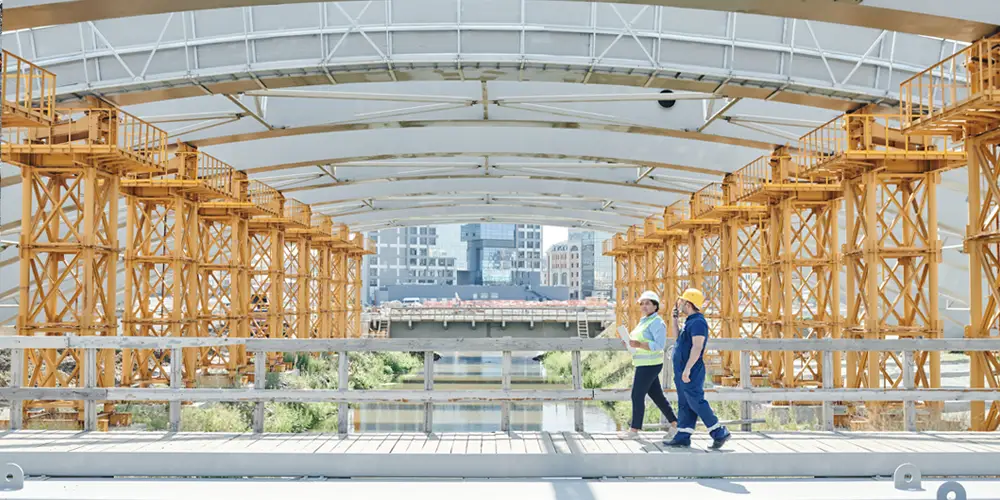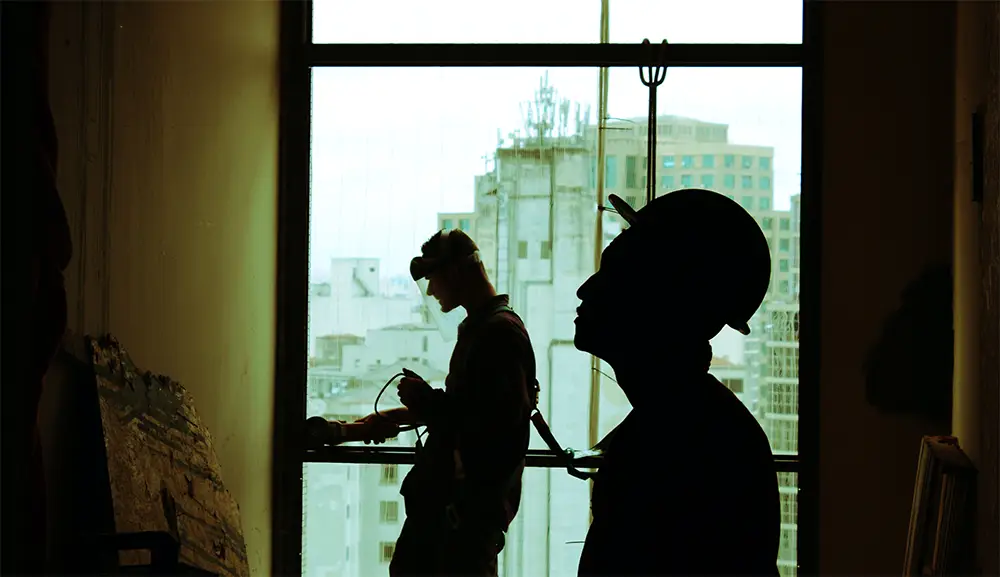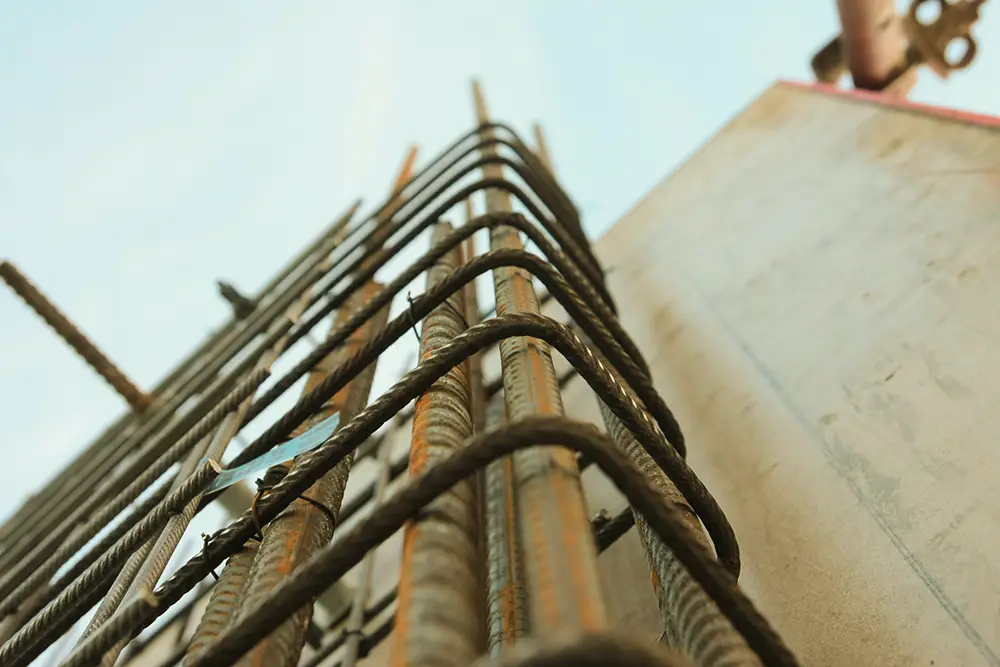Construction Site Inspections
A Complete Guide

Site inspections are an essential part of construction to maintain quality and safety standards throughout the project. They help to identify errors and manage the risks that can arise from coordinating lots of workers, materials, and equipment on a jobsite. As construction projects are constantly changing it’s important to conduct regular site inspections to proactively address issues and avoid costly mistakes. In this article we will look at the different types of site inspections that exist in construction, who is responsible for them, and some tips to help you complete them successfully!
Table of Contents
Who Conducts Site Inspections?
Site inspections are carried out by a variety of people involved in the project such as Project Managers, Engineers and Architects. It really depends on the type of inspection being conducted. These individuals are responsible for ensuring that all work is being carried out according to the building code, design specifications, and other relevant regulations. Some inspections are carried out by third-party specialists such as building inspectors, consultants, industry regulators and government bodies (e.g. OSHA and EPA).
Types of Site Inspections
There are many types of site inspections that exist in construction and depending on the type, stage, size and location of the project, different inspections may be required. Below are some common types of inspections:
Dilapidation Inspection
A dilapidation inspection looks at the condition of the project site, and the neighboring buildings or structures, to assess the potential impact of the construction work. It is used to capture a snapshot of the surroundings before the construction begins (eg, any pre-existing cracks). A follow-up dilapidation inspection is typically completed after the construction project has finished for comparison to the prior report. Dilapidation inspections are conducted by third-party licensed inspectors.
Daily Inspection
Daily inspections are routine inspections of a construction site to ensure compliance with building codes, regulations, and project specifications. It records what work was done on a day, the weather conditions, the number of workers present and any issues/delays that were encountered. The daily inspection is also used to assess how the project is progressing as per the planned schedule/programme as an input for management. Daily inspection reports are typically prepared by the Site Manager.

Health and Safety Inspection
Health and safety Inspections are conducted to ensure that there are no hazards or potential risks at the jobsite for its workers. A Health and Safety Inspector checks the suitability of tools and equipment as well as the adherence of personal protective equipment (PPE). They also ensure that proper safety procedures are in place and are being followed.
Health and safety issues encountered during an inspection need to be recorded and acted upon quickly to ensure no safety incidents arise. Some issues can stop work across the entire jobsite until it is fixed.
The top 5 most cited OSHA violations in 2022 were:
- Fall Protection (5,980 violations)
- Hazard Communication (2,682 violations)
- Ladders (2,471 violations)
- Respiratory Protection (2,430 violations)
- Scaffolding (2,285 violations)
Environmental Inspection
Environmental inspections look at the impact of the construction project on the surrounding environment. They aim to identify and assess any potential environmental risks such as air and water pollution, soil contamination, waste disposal and noise pollution. Key sensitive areas identified during the dilapidation inspection (eg, protected trees) will be monitored during each environmental inspection. These inspections are typically conducted by Environmental Engineers.
Quality Control (QC) Inspections
Quality Control (QC) Inspections on a construction site verify that the construction work meets the required Quality Assurance (QA) standards and specifications. It is used to identify and rectify any defects or deficiencies in the work before they become a bigger problem. QC inspections commonly compare the ‘as built’ with the ‘design’ to ensure that the work completed meets the expectations of the client.
Progress Inspection
Progress inspections are regular inspections that are done to monitor the progress of the project and ensure that it is on schedule, within budget and to the expected quality of the client. It is typically completed by the Project Manager. Progress inspections are also used to assess where a project is behind/ahead of the planned schedule/programme as an input for management.
Project Close-Out Inspection
Project close-out inspections are the final inspection performed at the end of the construction project. The purpose of this inspection is to verify that all work is defect free and has been completed according to the design specifications. Once completed, the project is ready for final acceptance by the owner/client. In most countries an Occupation Certificate (OC) is issued by the local authorities that signifies that all requirements have been met and that the building is ready for occupancy.
Defects Inspection
Defect inspections are a regular occurrence during the final stages of a construction project when the final ‘finishing’ work is being completed. These inspections look for any work that was not completed to design standards, quality standards or even work that is yet to be completed. Defect inspections are usually completed by the Project Foreman and the Project Manager, but can also be completed by specialist Building Inspectors. A punch list (or snag list) is created so the defects can be tracked and resolved by the trade responsible.

Structural Inspection
Structural inspections are completed by Structural Engineers and ensure that the structural elements (foundations, slabs, columns, etc) are completed as per the design specifications and that there are no issues that may affect its structural integrity. This includes inspecting the concrete reinforcing elements before concrete is poured, obtaining a record of the type of concrete used and the curing times.
Fire Rating Inspections
A fire rating inspection is required to ensure all fire management equipment is installed as per the building codes and standards. This includes the collars used for any penetrative plumbing or services work between areas of the building, the actual building materials used, and even fire escapeways. Fire rating inspections are conducted before the project proceeds to the ‘finishing’ stage where final walls/surfaces are installed, obscuring many of these protective devices.
Architect Site Inspection
Architect inspections are performed throughout the entire building process to ensure that the work being completed stays true to the intended design and quality. The Architect often sits adjacent to the building contractor and reports back to the project client on progress.
Mechanical Inspection
A mechanical inspection is done to verify that all the heating, ventilation, and air conditioning (HVAC) systems have been installed correctly. This can also include an assessment of whether installed electrical or plumbing services will impact on the HVAC system and any rectification work needed. Licensed Mechanical engineers conduct these inspections and often perform commissioning to ensure that the installed HVAC systems work as intended.
Electrical Inspection
An electrical inspection is generally performed by the head foreman of the electrical sub-contractor to ensure that the electrical work has been completed as per the design specifications. This is required before any final walls/surfaces are installed as a check to minimize re-work. The electrical inspection can also include commissioning tests in the final stages of construction as a record that electrical equipment is functioning properly.
Plumbing Inspection
Plumbing inspections are generally performed by the head foreman of the plumbing sub-contractor. Similar to an electrical inspection they are used to ensure that the designed work has been completed correctly and using the correct componentry. These inspections are also required before any slabs are poured (if containing plumbing work) and before final walls/surfaces are installed.
Keys to Successful Site Inspections
Preparation
This may be obvious but being prepared is an important part of conducting successful site inspections. Before going on site, review any relevant plans and documents that are available so you are familiar with the area to be inspected. This will help you to understand what you should be looking out for during the site walk and to identify any potential issues beforehand. Also, if you are accessing an external site, make sure you speak with the site team so they are on the same page and can help you with any questions.
Attention to Detail
Paying close attention to detail during the site inspection is crucial because it helps to ensure that the inspection is thorough and accurate. Even though construction sites can be a very chaotic place, make sure you take your time! Use a pre-prepared inspection checklist so you don’t miss any important details while out in the field.
If the inspection requires capturing photos, take lots of them (from different angles). You should also be taking detailed notes and marking the location of each photo on a plan or map for reference later. There’s nothing worse than going back to the office and realizing that you didn’t capture all the details that you need for the report. SiteCam makes this process simple and fast!

Communication
Like many things in life, good communication is a key part of a successful site inspection. It makes sure that everyone is on the same page and that the inspection process goes as smoothly as possible. During the inspection, it is important to communicate with the site team to explain the process, identify any areas of concern, and discuss any specific issues that may need their attention. Good communication helps build trust and reduces misunderstandings or delays that could negatively affect the project.
Site Inspection Apps
There are many site inspection apps available that can help streamline the process of collecting data in the field and completing inspection reports. In general, there are two different types of apps available:
Digital Checklist/Form apps like SafetyCulture (iAuditor) and SiteMate. These tools are great for creating standardized inspection templates for your whole company/organization. These inspection templates ensure that all of the important items are covered and are consistent.
Photo Documentation apps like SiteCam and Dropbox that allow easy data collection and sharing in the field. Photos are backed up automatically to the cloud and reports can be generated instantly. SiteCam includes built-in tools for organizing, sorting, and searching your files!
Try SiteCam for Free
Want an easy way to improve your next site inspection? Try SiteCam for Free and see how your team records better information from the field in less time. Achieve centralized and organized site photos that instantly link to fast reporting templates, saving you time back in the office. Sign up here:
Related Articles
- Project Management for Architects
- Improving Photo Documentation for UK’s Building Safety Act 2022
- How to Create Construction Progress Reports
- Guide to Concrete Slab Inspections
- The Importance of Photo Documentation in Construction
- Architect’s Guide to Site Visits and Observations
- What is rough-in stage in construction?
- 10 tips for taking better site photos
- How to be a great building cadet